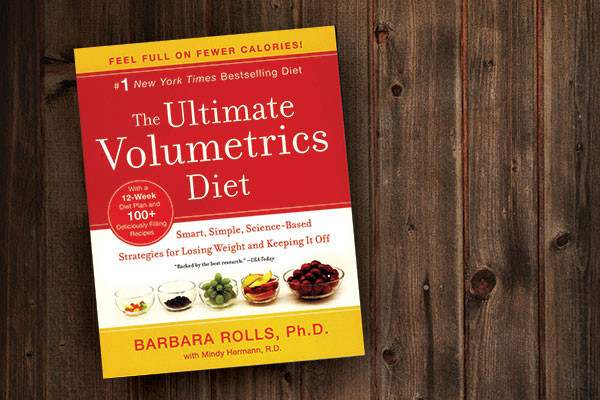
If eating healthier is on your list of New Year’s resolutions, you may need to look no further than Volumetrics, a diet developed by Penn State Professor of Nutrition Barbara Rolls that has tied for the No. 2 weight-loss plan in this year’s U.S. News & World Report's "Best Diets."
The annual ranking — now in its 10th year — combines experts’ ratings on such factors as how easy the diet is to follow, its nutritional value, and its effectiveness for short- and long-term weight loss results, among others. Volumetrics has appeared on the rankings every year since 2011.
Rolls, Helen A. Guthrie Chair in Nutrition and director of the Laboratory for the Study of Human Ingestive Behavior at Penn State, said the goal of Volumetrics is to bring healthy eating to weight management.
“With the plan, I aim for people to find a healthy eating pattern that they can enjoy and therefore keep doing,” Rolls said. “It focuses on thinking positively about what you can eat rather than restricting, because that’s not sustainable. When you enjoy your diet, that’s going to help you not only be healthier but to also aid in weight management.”
According to Rolls, Volumetrics is based on the science of satiety, the feeling of fullness you get as you eat. The program encourages people to eat foods that are less calorie dense, which allows them to feel full for fewer calories. For example, when starting a meal with a large bowl of broth-based soup, studies from her lab show people eat fewer calories at the meal and feel just as full as when they had no first course.
Rolls said she created the diet after her research found that people tend to eat a similar weight or volume of food at meals.
“If people are eating a consistent weight of food, then the calories in each ounce or bite are going to make a big difference,” Rolls said. “We’ve done other studies that show you can reduce the density of calories in food by 25 to 30 percent without compromising taste, by tweaking the ingredients.”
For those interested in getting started with Volumetrics, Rolls advised looking at your current diet to spot where you can make long-term changes.
“Volumetrics isn’t about giving up your favorite foods, it’s about modifying them,” Rolls said. “I encourage people to look at the foods they’re eating, and then figure out ways to tweak them so they’re healthier and have fewer calories. For example, you can cut down on the fat and sugar and enhance the flavor with herbs and spices.”
Rolls has written three books about Volumetrics: "Volumetrics: Feel Full on Fewer Calories" (also published under the title "The Volumetrics Weight-Control Plan") in 2000, "The Volumetrics Eating Plan" in 2005, and "The Ultimate Volumetrics Diet" in 2012.
Volumetrics was also ranked No. 5 for best diets overall, No. 6 (tie) for best diets for diabetes, and No. 6 (tie) for best diets for healthy eating.